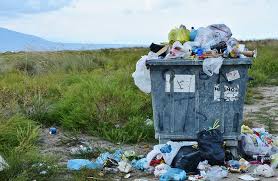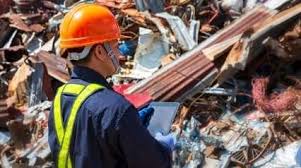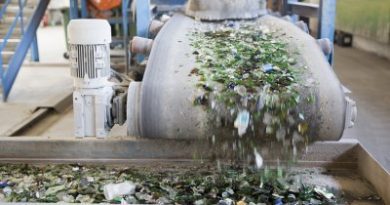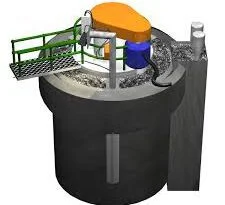Classification of Solid Waste
Different writers vary their opinion on the classification of solid waste. It may be categorized according to its origin (domestic, industrial, commercial, construction or institutional); according to its contents (organic material, glass, metal, plastic paper etc.); or according to hazard potential (toxic, non-toxin, flammable, radioactive, infectious etc.).
That is, based on the effect on man and environment, solid waste can be classed as hazardous, non-hazardous and infectious wastes. Indeed, there seem to be no end to the manner solid waste can be classified.
For the purpose of this course, we shall adopt the classification of waste based on source, mode of handling and health effects.
Solid waste in this respect can be classified into different types depending on their source:
– Household waste is generally classified as municipal waste
– Industrial waste as hazardous waste
– Biomedical waste or hospital waste as infectious waste.
1) Municipal Solid Waste
Municipal Solid Waste (MSW) is the garbage that we produce in our homes and where we work. The word municipal means anything that is operated and controlled by elected local officials such as city or local governments.
Usually, MSW refers to what we throw away each day in our cities and towns. It consists of household waste, construction and demolition debris, sanitation residue, and waste from streets.
Read Also : Proper Waste Reduction Process
MSW contains all kinds of garbage including newspapers, yard waste, old appliances, household garbage, used furniture and just about anything you can think of that people throw away at home, schools, and businesses.
This garbage is generated mainly from residential and commercial complexes. With rising urbanization and change in lifestyle and food habits, the amount of municipal solid waste has been increasing rapidly and its composition changing.
2) Hazardous Waste
Industrial and hospital waste is considered hazardous as they may contain toxic substances. Certain types of household waste are also hazardous.
Hazardous wastes could be highly toxic to humans, animals, and plants; are corrosive, highly inflammable, or explosive; and react when exposed to certain things e.g. gases.

Household wastes that can be categorized as hazardous waste include old batteries, shoe polish, paint tins, old medicines, and medicine bottles.
In the industrial sector, the major generators of hazardous waste are the metal, chemical, paper, pesticide, dye, refining, and rubber goods industries. Direct exposure to chemicals in hazardous waste such as mercury and cyanide can be fatal.
3) Hospital Waste (Medical Waste)
Hospital waste is generated during the diagnosis, treatment, or immunization of human beings or animals or in research activities in these fields or in the production or testing of biological.
It may include wastes like sharps, soiled waste, disposables, anatomical waste, cultures, discarded medicines, chemical wastes, etc.
These are in the form of disposable syringes, swabs, bandages, body fluids, human excreta, etc. This waste is highly infectious and can be a serious threat to human health if not managed in a scientific and discriminate manner. It has been roughly estimated that of the 4 kg of waste generated in a hospital at least 1kg would be infected.
Hospital waste contaminated by chemicals used in hospitals is considered hazardous. These chemicals include formaldehyde and phenols, which are used as disinfectants, and mercury, which is used in thermometers or equipment that measure blood pressure. Most hospitals in India do not have proper disposal facilities for these hazardous wastes.
4) Street Waste
Street wastes are wastes not easily accounted for in terms of the originator and with less defined and non-palpable responsibility for its removal other than through organized community or local authority/municipal action.
There are three types of street waste namely;
1) Wastes generated by natural causes,
2) Wastes generated by road traffic, and
3) Wastes generated by the public (behavioral wastes).
Street wastes generated by natural phenomena and are difficult to avoid. They include dusts blown from unpaved areas, and leaves and flowers that fall from trees and plants in the community. Others include sand deposits, mud, rocks, and other debris.
Waste generated by road traffic includes dirt and mud, as well as oil and rubber deposited by motor vehicles on the roads.
Particulate matter from diesel emissions also accumulates on streets, trees, and building surfaces, creating a public nuisance. In addition, in developing countries, it is common to transport materials in vehicles that are uncovered, and there can be accidental spillage of a vehicle’s load.
Street wastes generated by the public though faulty behavior includes litter thrown onto the streets by pedestrians, and residential and commercial wastes swept or discarded from private premises.
As previously indicated, a large fraction of these wastes can be controlled, provided that an efficient and reliable refuse collection service is in operation and that litter bins are provided for use by pedestrians.
Read Also : Proper Waste Recycling Process
In conclusion, waste is a relative term describing the current use or disuse of our materials and property. Solid waste, which is tangible and non-free flowing waste can constitute environmental, economic and health problems when not handled properly.
On the other hand solid waste when handled properly constitutes some useful alternative resource to the individual, household and the general community. Since waste is unavoidable in the life of man, it must be accommodated in our daily activities through careful planning of our course of action, choice of what to acquire and provision for handling of spoilt or disused materials and possessions.



